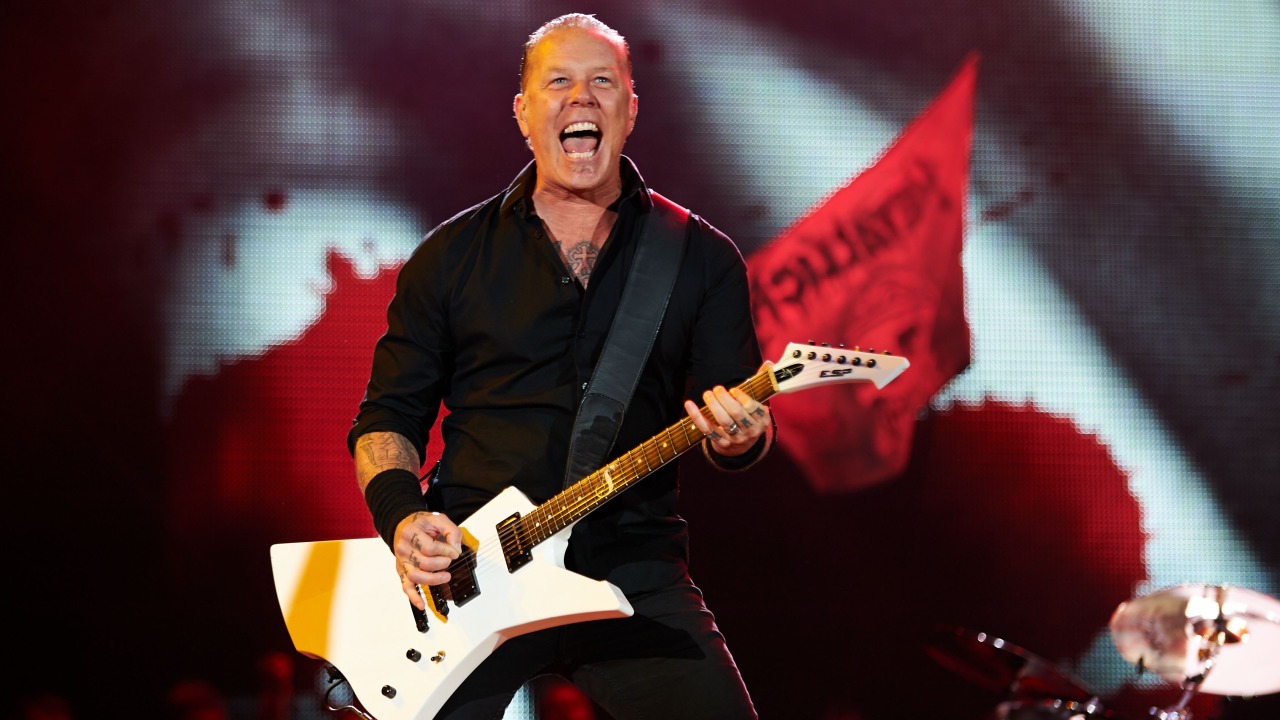In 2008, as they completed work upon their ninth studio album, Metallica took the unusual step of inviting London/San Francisco brand consultants/designers Turner Duckworth for a meeting at their San Rafael HQ in order to discuss ideas about how they might best re-engage with their audience while simultaneously refreshing the Metallica ‘brand’. Despite having little previous experience in the world of rock n’ roll – Turner Duckworth’s regular clientele includes Google, Coca-Cola and the Waitrose supermarket chain – the firm were entrusted not only with ‘modernising’ the band’s logo and collating images for a CD booklet for the quartet’s forthcoming release, but were also asked to nominate an album title from four working titles under consideration.
That this meeting was ever pencilled into the band’s diaries is a striking indication of Metallica’s state of mind as they contemplated their return with the Death Magnetic album. Still reeling from the critical mauling handed out to St. Anger, and aware just how potentially damaging the incredibly candid and bold Some Kind Of Monster documentary was in terms of tearing down their public image as untouchable metal icons, Metallica in 2008 were a band unsure of their standing in the metal world, and unsure too about where exactly they wanted to go. St. Anger might have been a mess, a desperate, panicked attempt to bind together a visibly imploding collective, but as a snapshot of the state-of-the-union in 2002⁄2003 it was at least painfully honest: Death Magnetic, however, though a much superior album on almost every level, would emerge as Metallica’s most self-conscious collection of songs, the sound of a superstar band second-guessing their art and their audience’s expectations, wilfully trying to recover lost ground and re-connect with their core fanbase by re-treading old ground covered on Master Of Puppets and …And Justice For All. On a business level the approach paid dividends, putting Metallica on the front foot once again, but the fact remains that Death Magnetic is the band’s most creatively dishonest release since they attempted to write a hit single with Escape on Ride The Lightning, a decision the band subsequently regretted so much that they wouldn’t play the song in concert until 2012.
So, where does this leave Metallica in 2015, and what can we expect from album number ten? In truth, only the four men beavering away in the studio know for sure. While there’s zero chance of the spontaneous, off-the-floor jams cultivated for Lulu informing the sound and feel of Death Magnetic’s follow-up, it’s uncertain too whether Lords Of Summer, the Hetfield/Ulrich/Trujillo composition premiered in March last year, holds any clues as to the shape of Metallica to come.
There’s certainly no shortage of new ideas for the quartet to draw upon – this time last year Kirk Hammett revealed that he and James Hetfield alone had some 1,200 pieces of music in demo form – but the question is whether they still have the nous and know-how to sort the wheat from the chaff. While that task has traditionally been undertaken by Lars Ulrich, it would perhaps be helpful now if Metallica could also enlist the services of a producer with both discerning ears and the confidence and nerve to tell them which of their new creations fly and conversely, which suck donkey balls.
In a sense, one can understand Metallica’s reticence to embark upon a new album: regardless of what emerges from these latest studios sessions, it’s highly, highly unlikely to please every section of their passionate, vocal audience. And how could it? For every diehard loyalist who regards the quartet’s first three albums as metal’s own holy trinity, there are just as many Metallica fans who regard the Black album or indeed Load as the pinnacle of the band’s creative output: trying to please (appease?) everyone would unquestionably lead to Metallica pleasing no-one at all.
Perhaps the keys then to Metallica’s future lie somewhere in the foundations of their remarkable career. While they work upon their new album, Metallica are also currently engaged in over-seeing the upcoming deluxe reissues of Kill ‘Em All and Ride The Lightning, and helping collate material for writer Matt Taylor’s forthcoming book on Master Of Puppets. As they sift through relics of the past, it might just be that Lars Ulrich and James Hetfield in particular are reminded of what fearless, intuitive, cocky little fucks they used to be in their late teens and early 20s, how little they gave a shit about outside perceptions of their band and how bold and unapologetic each step forward was undertaken. For beyond specific sounds and songs, if Metallica fans want anything from their favourite band in 2015 it’s surely this – the knowledge that once again their heroes are playing from their fucking hearts. Thirty years ago, as he sat down to pen the lyrics of Metallica mission statement Damage Inc., James Hetfield wrote of his band’s desire to “follow instinct not a trend”, to “go against the grain until the end.” Exactly how close to “the end” the quartet are right now we don’t know, but those defiant words can still inform Metallica’s DNA in 2015… without any guidance from corporate ‘brand consultants’. Fuck it all and fucking no regrets, remember James? We’re waiting gents, we’re waiting…
Paul Brannigan’s Metallica biography Into The Black: The Inside Story of Metallica 1991 – 2014 (co-written with Ian Winwood) is out now on Faber & Faber.

